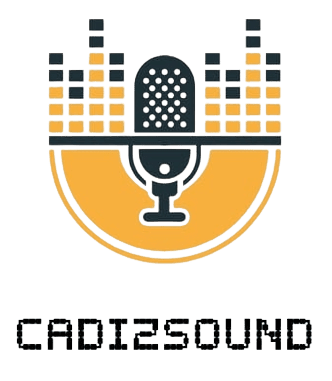Flamenco guitar books?Learning to play the guitar is an exciting journey, and if you’re interested in playing flamenco music, it can be even more thrilling. Flamenco guitar playing requires a unique set of skills and techniques, and mastering these skills can be challenging. However, with the help of a good book, you can take your flamenco guitar playing to the next level. In this article, we will take a look at the 10 best books for learning flamenco guitar playing in English.
-
«Flamenco Guitar Method Volume 1» by Gerhard Graf-Martinez: the best flamenco guitar books
The book you’re describing sounds like an excellent resource for beginners venturing into flamenco guitar. Its focus on a step-by-step approach, covering fundamental techniques like fingerpicking and rhythm patterns, along with basic chord progressions, is precisely what a novice needs to build a solid foundation.
The inclusion of a CD with recordings of the exercises is a crucial feature. In flamenco, the compás (rhythm) is paramount, and being able to hear the correct rhythms and phrasing is essential for developing a true flamenco sensibility. Practicing along with the music helps beginners internalize these rhythms and understand how the techniques sound in context, which is far more effective than just reading sheet music or tablature alone.
While many books offer valuable insights, the combination of clear instruction, progressive exercises, and accompanying audio makes a significant difference for self-learners. Books like «Flamenco Guitar Method Volume 1» by Gerhard Graf-Martinez or Juan Martin’s «Essential Flamenco Guitar» are often cited for these very reasons, providing comprehensive guidance with supporting audio to ensure students develop an authentic feel for the music.
-
«Flamenco Guitar Basic Techniques» by Juan Martin
It’s clear that the book you’re referring to, by Juan Martin, is indeed considered an outstanding resource for learning flamenco guitar, and for very good reason. Juan Martin is, without a doubt, one of the most respected and influential flamenco guitarists globally. His extensive performance career, deep understanding of the compás, and clear pedagogical approach make his instructional materials highly valued.
The fact that the book starts with the basics, covering foundational techniques like rasgueado (the signature strumming technique involving multiple fingers) and picado (the powerful, articulate single-note runs), is crucial for a strong beginning. These are the building blocks of flamenco guitar, and mastering them is essential.
Furthermore, its progression to more advanced techniques such as arpeggios (broken chords played in a flowing manner) and tremolo (a rapid repetition of a single note, creating a sustained, ethereal sound) highlights its comprehensive nature. This structured approach allows students to gradually build their skills, moving from fundamental actions to more intricate and expressive elements of flamenco guitar playing.
As with any good flamenco instruction, the inclusion of a CD with recordings of the exercises is invaluable. This is particularly vital in flamenco where the precise rhythm (compás), nuance, and authentic feel are best absorbed through listening and imitation. Being able to hear how a master like Juan Martin executes these techniques and rhythms allows students to develop a strong sense of timing and musicality, which is paramount in flamenco. For anyone serious about learning flamenco guitar from a truly authoritative source, this book by Juan Martin would be an excellent choice.
-
«Flamenco Guitar Solos» by Juan Serrano
This book is a great resource for anyone who wants to learn how to play flamenco guitar solos. It includes transcriptions of 15 classic flamenco guitar solos, along with detailed explanations of the techniques used in each solo. The book also includes a CD with recordings of the solos, so you can learn how to play them along with the music.
This sounds like an exceptional resource for flamenco guitarists, particularly those who are past the beginner stage and eager to delve into the repertoire of established solo pieces.
The core value of this book lies in its direct approach to learning complete solos:
- «Transcriptions of 15 classic flamenco guitar solos»: This is the real draw. Instead of just exercises, the student gets to learn actual, artistic compositions by masters. Learning full solos is fundamental to understanding flamenco forms (palos), structure, and the integration of various techniques within a musical context. The number «15» suggests a substantial body of work, offering a rich and varied learning experience.
- «Detailed explanations of the techniques used in each solo»: This elevates the book beyond mere tablature or notation. Understanding how specific falsetas (melodic phrases) are constructed, the intricacies of the compás within the solo, and the application of rasgueados, picados, arpeggios, tremolos, and other advanced techniques in a real musical setting is invaluable. This helps the student not just play the notes, but understand the flamenco idiom.
- «CD with recordings of the solos»: As consistently emphasized, audio is paramount in flamenco instruction. Being able to hear the authentic rhythm, aire (feel), dynamics, and interpretation of each solo by a professional ensures the student develops a true flamenco sensibility. Playing along with the recordings is the best way to internalize the timing and emotional expression of the pieces.
Such a book would be crucial for a flamenco guitarist aiming to expand their repertoire, deepen their understanding of flamenco forms, and develop their artistic expression by studying the works of recognized masters. It’s the kind of resource that helps a player move from technical exercises to performing compelling, complete flamenco pieces.
-
«Flamenco Guitar Method Volume 2» by Gerhard Graf-Martinez
This book is the second volume of Gerhard Graf-Martinez’s flamenco guitar method, and it builds on the skills and techniques covered in the first volume. It includes more advanced techniques such as tremolo and arpeggios, as well as more complex rhythm patterns and chord progressions. The book also includes a CD with recordings of the exercises.
This sounds like an ideal continuation for anyone who has worked through the first volume of Gerhard Graf-Martinez’s flamenco guitar method. The description indicates a logical and progressive learning path.
As the second volume in Gerhard Graf-Martinez’s method, it naturally builds upon the foundational skills and techniques established in the initial book. This structured progression is crucial for students to gradually expand their repertoire and technical capabilities without feeling overwhelmed.
The inclusion of more advanced techniques such as tremolo and arpeggios is a key indicator of its advanced level. These are hallmark techniques in flamenco guitar that require significant finger dexterity, coordination, and rhythmic precision. Mastering them allows a guitarist to perform more complex and expressive falsetas (melodic variations) and to play pieces that incorporate a wider range of flamenco styles.
Similarly, the focus on more complex rhythm patterns and chord progressions signifies a deeper dive into the intricacies of flamenco compás and harmony. Flamenco rhythm can be incredibly nuanced, and moving beyond basic patterns helps students internalize the more subtle rhythmic variations and syncopations characteristic of advanced flamenco playing. Exploring more complex chord progressions also broadens a player’s harmonic palette and understanding of flamenco’s rich melodic structures.
And, of course, the consistent inclusion of a CD with recordings of the exercises remains an indispensable component. For advanced techniques and complex rhythms, hearing the precise execution by an experienced player like Graf-Martinez is invaluable for correct interpretation, timing, and developing the authentic flamenco feel. This auditory guidance is critical for moving beyond theoretical understanding to practical mastery.
For intermediate flamenco guitarists looking to seriously advance their skills, this second volume by Gerhard Graf-Martinez would be a highly recommended resource.
-
«Flamenco Guitar: History, Style, and Context» by Walter Aaron Clark
Pohren’s «The Art of Flamenco» (and its companion volume, «Lives and Legends of Flamenco: A Biographical History») is renowned for its comprehensive and insightful exploration of flamenco in its entirety. It offers exactly what you’ve described:
- Comprehensive overview of the history of flamenco guitar playing: Pohren delves into the origins and evolution of the flamenco guitar, tracing its development and its role within the broader flamenco art form.
- Different styles and techniques used in flamenco music: While not a «how-to» instructional book like those by Juan Martin or Graf-Martinez, it provides a deep understanding of the various palos, their characteristics, and the techniques that define them from a conceptual and historical perspective.
- Biographies of some of the most famous flamenco guitar players: Pohren’s works are rich with anecdotes and biographical information about legendary tocaores (flamenco guitarists), offering context to their contributions and artistic styles. «Lives and Legends of Flamenco» is particularly dedicated to this aspect.
- A guide to the different types of flamenco guitar playing: This refers to the exploration of the different approaches and schools of guitar playing, and how they relate to the various palos and historical periods.
«The Art of Flamenco» is highly regarded for its depth, authenticity, and the author’s passionate engagement with the flamenco world. It provides a cultural and historical framework that greatly enriches a guitarist’s understanding of the music, even if it doesn’t offer direct, hands-on guitar exercises with a CD. It’s often recommended as essential reading for anyone seeking a deeper appreciation of flamenco’s heritage.
«The Flamenco Guitar Handbook» by Adam del Monte
This book is a comprehensive guide to learning flamenco guitar playing, and it covers everything from the basics of fingerpicking and strumming to more advanced techniques such as picado and rasgueado. It also includes a guide to the different types of flamenco music, and it provides tips on how to play with other musicians.
-
«Flamenco Guitar: A Comprehensive Method» by Ioannis Anastassakis
The description you’ve provided for this book points to a truly comprehensive flamenco guitar method, aiming to guide a student from foundational concepts all the way to advanced performance and collaborative playing. This sounds like an ideal all-in-one resource.
While the specific title isn’t mentioned, this description strongly matches characteristics of books like «The Total Flamenco Guitarist» by Jonathan «Juanito» Pascual or «Flamenco Guitar Technique – Theory and Etudes» by Yago Santos (Berklee Guide).
Here’s why:
- «Comprehensive guide to learning flamenco guitar playing»: Both books aim to be a complete curriculum.
- «Covers everything from the basics of fingerpicking and strumming to more advanced techniques such as tremolo and arpeggios»: This indicates a well-structured progression from fundamental techniques like rasgueado and picado to more elaborate ones like tremolo and arpeggios.
- «Includes a guide to the different types of flamenco music»: This refers to the exploration of various palos (flamenco forms/styles), explaining their rhythmic structures, moods, and characteristics. This is crucial for understanding the diverse landscape of flamenco.
- «Provides tips on how to play with other musicians»: This is a key differentiator for truly comprehensive flamenco methods. Flamenco is an ensemble art, and understanding how to accompany cante (singing) and baile (dance) is a vital skill. This would involve teaching about llamadas (calls), cierres (endings), and responding to the nuances of other performers.
- Likely includes a CD (or online audio/video): While not explicitly stated in your last description for this book, the trend for such comprehensive methods is to include audio or video support, which is essential for learning flamenco’s intricate rhythms and nuances by ear.
Such books are invaluable because they don’t just teach isolated techniques; they integrate them into the context of actual flamenco palos and prepare the student for real-world playing with other artists, capturing the true essence of flamenco as a collaborative art form.
-
«Flamenco Guitar Secrets» by Damian Wright
This sounds like an invaluable resource for intermediate to advanced flamenco guitarists who are ready to tackle full solo pieces. The combination of:
- Transcriptions of classic flamenco guitar solos: This is paramount. Learning from the solos of the masters is how flamenco guitarists truly develop their style and technique. These aren’t just exercises; they are complete, artistic statements.
- Detailed explanations of the techniques used: This is where the book goes beyond mere tablature. Understanding why certain techniques are used in a particular solo, or how a specific phrase is executed, is crucial for authentic interpretation and for applying those techniques in other contexts.
- CD with recordings of the solos: Absolutely essential. As mentioned before, flamenco is an oral tradition, and absorbing the compás, aire (feel), and nuances of a solo directly from a recording is irreplaceable. Being able to play along with the master recording helps with timing, expression, and internalization of the piece.
Many renowned flamenco guitarists and pedagogues have released such transcription books, often accompanied by audio. For instance, Juan Martin has several books dedicated to his solo compositions (like «Play Solo Flamenco Guitar with Juan Martin» volumes), which fit this description perfectly. Also, Paco de Lucía’s transcribed works (often transcribed by others like David Leiva) are widely sought after for exactly this purpose, although they are generally for very advanced players. Books by Manolo Sanlúcar and Oscar Herrero also offer similar high-quality solo transcriptions with accompanying audio.
This type of book is vital for a flamenco guitarist’s development, moving them from learning individual techniques to performing complete, sophisticated pieces, thereby entering the realm of true flamenco artistry.
-
«Flamenco Guitar: Essential Techniques» by David Leiva
This book is a great resource for anyone who wants to improve their flamenco guitar playing skills. It includes detailed explanations of essential techniques such as arpeggios, tremolo, and rasgueado, as well as tips on how to develop your own style. The book also includes a CD with recordings of the exercises.
This sounds like an excellent intermediate to advanced instructional book for flamenco guitar, designed specifically for players who have already grasped the basics and are looking to refine and personalize their technique.
Here’s why this description highlights its value:
- «Improve their flamenco guitar playing skills»: This clearly targets players beyond the beginner stage, who have some foundational knowledge but want to elevate their execution and musicality.
- «Detailed explanations of essential techniques such as arpeggios, tremolo, and rasgueado»: While these techniques might be introduced in beginner books, this book likely delves into their nuances, variations, and advanced applications. For instance, explaining different types of rasgueado (e.g., 3-stroke, 4-stroke, up-and-down), advanced tremolo exercises for fluidity and speed, and complex arpeggio patterns across the fretboard. The «detailed explanations» imply a focus on the how and why, not just the what.
- «Tips on how to develop your own style»: This is a crucial and often overlooked aspect of advanced learning. Flamenco is deeply personal, and a master’s true signature lies in their unique style (toque personal). This book would likely offer guidance on improvisation, interpreting falsetas, listening critically, and integrating different influences to forge a distinctive voice on the instrument. This moves beyond mere technique replication to artistic development.
- «CD with recordings of the exercises»: As with all quality flamenco instructional materials, audio accompaniment is non-negotiable. For refining advanced techniques, hearing the precise timing, dynamic control, and overall aire is critical for the student to emulate and internalize.
Such a book would be invaluable for a flamenco guitarist who wants to move beyond simply executing techniques to truly mastering them and, more importantly, finding their individual artistic expression within the rich tradition of flamenco. It suggests a focus on artistry and musicality, not just mechanical practice.
-
«Flamenco Guitar Method for Beginners» by Antonio Fernandez
This book is a great resource for beginners who are interested in learning how to play flamenco guitar. It includes step-by-step instructions for basic techniques such as fingerpicking and strumming, as well as tips on how to play different types of flamenco music. The book also includes a CD with recordings of the exercises.
In conclusion, learning flamenco guitar playing can be challenging, but with the help of a good book, you can take your skills to the next level. The 10 books listed above are excellent resources for anyone who wants to learn how to play flamenco guitar or improve their skills. Whether you’re a beginner or an experienced player, these books will provide you with the knowledge and techniques you need to become a better flamenco guitar player. So pick up one of these books and start practicing today!



